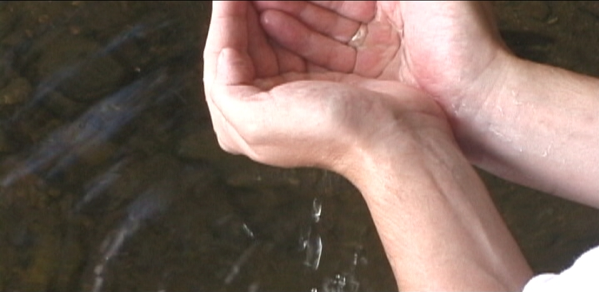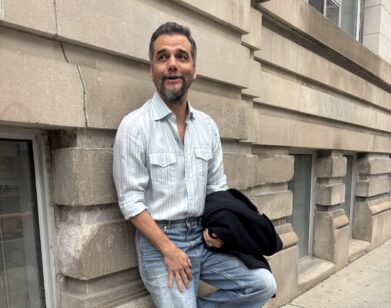Yann Arthus-Bertrand’s Home Is Where the Art Is

A STILL FROM HOME.
“New York, the world’s first megalopolis, is the symbol of the exploitation of the energy the earth supplies to human genius,” intones Glenn Close in Home, French aerial photographer Yann Arthus-Bertrand’s documentary about humanity’s impact on the planet.
If New York is so genius, why did it take two years to get on board with this film? Shown for free as Bertrand’s “gift to the world,” Home has already been translated into 40 languages and seen by more than 400 million people in 131 countries on five continents. The United States? We’ve racked up just one screening in Los Angeles last year.
“In America, I don’t think the gravity of the film was understood at all,” says Bertrand, who also brought the world the epic photo book Earth From Above, and spent three years working without pay to shoot Home from the air over 120 locations in 50 countries. “So we decided to do a special event in New York.”
That event, tonight’s New York premiere of the 118-minute film at Village East Cinema, kicks off a week of free screenings that Bertrand hopes will spread elsewhere later. “The movie is not mine, it’s yours. So from the beginning I tried to do a movie without copyrights, so it can go in schools, go everywhere,” says Bertrand, founder of the GoodPlanet Foundation and a Goodwill Ambassador for the United Nations Environmental Program. As such, he screened the film for the UN in 2009 and has interest from the World Bank.
Congress? “I would love to do it,” he says with a laugh. “If you can arrange it for me…”
When Close narrates (over an expansive score of chants, native instruments from Iran to Mongolia, and backing by the Budapest Symphony Orchestra and Shanghai Percussion Ensemble) the perils of extracting oil from the tar sands of Canada, you see the stunning scope of grey fluvial masses of pollution that lie in its wake. The once-mighty River Jordan has been reduced to a stream that reaches the Dead Sea so infrequently that salt islands are forming. Then there are the cattle, confined to grassless meat farms, and maintained globally by encouraging villagers in South America to cut down old-growth rainforests in order to harvest grain and soybeans to feed them. “And so, a forest is turned into meat,” says Close, with gravity.
“Last year … awful for climate change: 20 million killed in Pakistan, so many floods, so many droughts, so many fires, but [the U.S.] is the model of the world,” he says. He recalls an encounter with a charcoal farmer in Borneo, now a wasteland of semolina-colored cornrows after deforestation for charcoal. “I was talking to this guy about the orangutan, deforestation, global warming, and he laughed at me.”
Bertrand is already at work on a follow-up that will explore the plight of the world’s poor, two billion of whom still work the planet by hand. Expanding on the Borneo charcoaler, he says, “We went on his boat with his wife and she was bare-breasted with her baby, looking at an American [TV] series on a flatscreen. They know we live in a paradise, and they’re just trying to survive, and it’s so difficult to tell them, ‘Don’t live like us. Stay where you are. Don’t kill the trees.’ It’s impossible.” Meanwhile, the film notes that military spending in developed nations runs 12 times what is spent on foreign aid to the third world.
Though news of the film has already attracted 15 New York schools to screenings next week, there’s plenty more to be done. “Education is very important and it’s great to screen this in schools, but the most important thing is for us to change now, not to wait for the children. It’s going to be too late for our children,” says Bertrand. “We need a revolution.”
HOME PREMIERES TONIGHT AT VILLAGE EAST SCREENING, KICKING OFF A SERIES OF EVENTS CULMINATING IN A WEEK OF FREE SCREENINGS FROM FEBRUARY 4-11. FOR MORE INFORMATION, OR TO ORGANIZE A FREE SCREENING IN YOUR TOWN, VISIT HOMETHEMOVIE.ORG.






